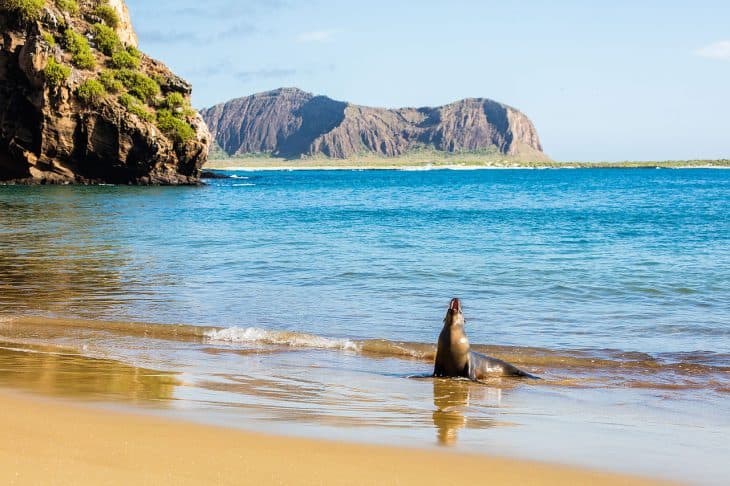
Have you ever considered a Galapagos Islands vacation? This exotic location is home to an incredible array of unique species and natural wonders. But did you know that the islands have a rich history and surprising facts that are sure to amaze even the most seasoned travelers? From peculiar animal behavior to Charles Darwin’s theory of evolution, the Galapagos Islands are truly a one-of-a-kind destination. Get ready to discover 80 surprising facts that will make you want to book your next vacation to the Galapagos Islands.
- Its official name is Archipiélago de Colón, while its Spanish name is Islas Galápagos.
- The word ‘Galapagos’ indicates the given Spanish name to the islands’ giant land tortoises.
- Galapagos Islands are a group of islands in the eastern region of the Pacific Ocean.
- The islands are part of the South American country Ecuador since 1832.
- Galapagos Islands consist of at least 12 islands.
- Its location near the equator gave the Galapagos Islands a constant temperate climate.
- The days and nights on the Galapagos Islands are of equal length.
- Galapagos Islands consist of the crossroads of 3 tectonic plates Pacific, Cocos, and Nazca.
- The convergence of currents on the islands means the unpredictable wave action.
- In 1684, Buccaneer Ambrose Cowley made the first crude navigation chart of the islands.
- Cowley named the islands after fellow pirates and English noblemen who helped him.
- In 1593, Richard Hawkins became the first English captain to visit the Galapagos Islands.
- Isla Baltra had the lone airport of the Galapagos Islands until 1986.
- Another one was built in San Cristobal Island, making them 2 now.
- Sierra Negra Volcano was the latest eruption on the Galapagos Islands in 2018.
- The fearless wildlife of the Galapagos Islands inspired Darwin’s Theory of Evolution by Natural Selection.
- Galapagos Islands is home to 13 active volcanoes with intermittent eruptions.
- Galapagos giant tortoises could last up to 1 year without water or food.
- The Galapagos giant tortoise could live for over 100 years, the highest longevity among land vertebrates.
- Marine iguanas exclusive in the Galapagos is the only sea-going lizard in the world.
Galapagos Islands Facts Infographics

Charles Darwin formed the theory of evolution while studying the Galapagos Islands.

Out of his 5-year voyage on the HMS Beagle, Charles Darwin only spent 5 weeks at the Galapagos Islands. However, he left the islands with the discovery of a lifetime. While observing the island’s flora and fauna, Darwin noticed the difference in local finches’ beaks depending on the environment and food source of each island. Later on, the English naturalist used this observation as a basis for the theory of evolution presented in ‘On the Origin of the Species.’
Isla Santa Cruz houses the largest human population in the Galapagos Islands.
A majority of the Galapagos Islands population lives in Puerto Ayora. This town which also houses the Charles Darwin Research Station and the Galapagos National Park Service is in the same place.
Galapagos Islands is home to 3 species of boobies.
No, it’s probably not the boobies you’re thinking about: The red-footed boobies are the smallest species, while the Nazca Boobies are the largest. Nazca boobies have gleaming white plumage and black-tipped feathers. Lastly, the blue-footed boobies parade their striking feet to attract mates. How’s that for cool Galapagos Islands facts?
Another name for the Galapagos Islands is the ‘Enchanted Islands.’
It is in reference to how the strong waves and swift currents around the islands made navigation difficult.
As an archipelago, the Galapagos Islands have 13 main volcanic islands.
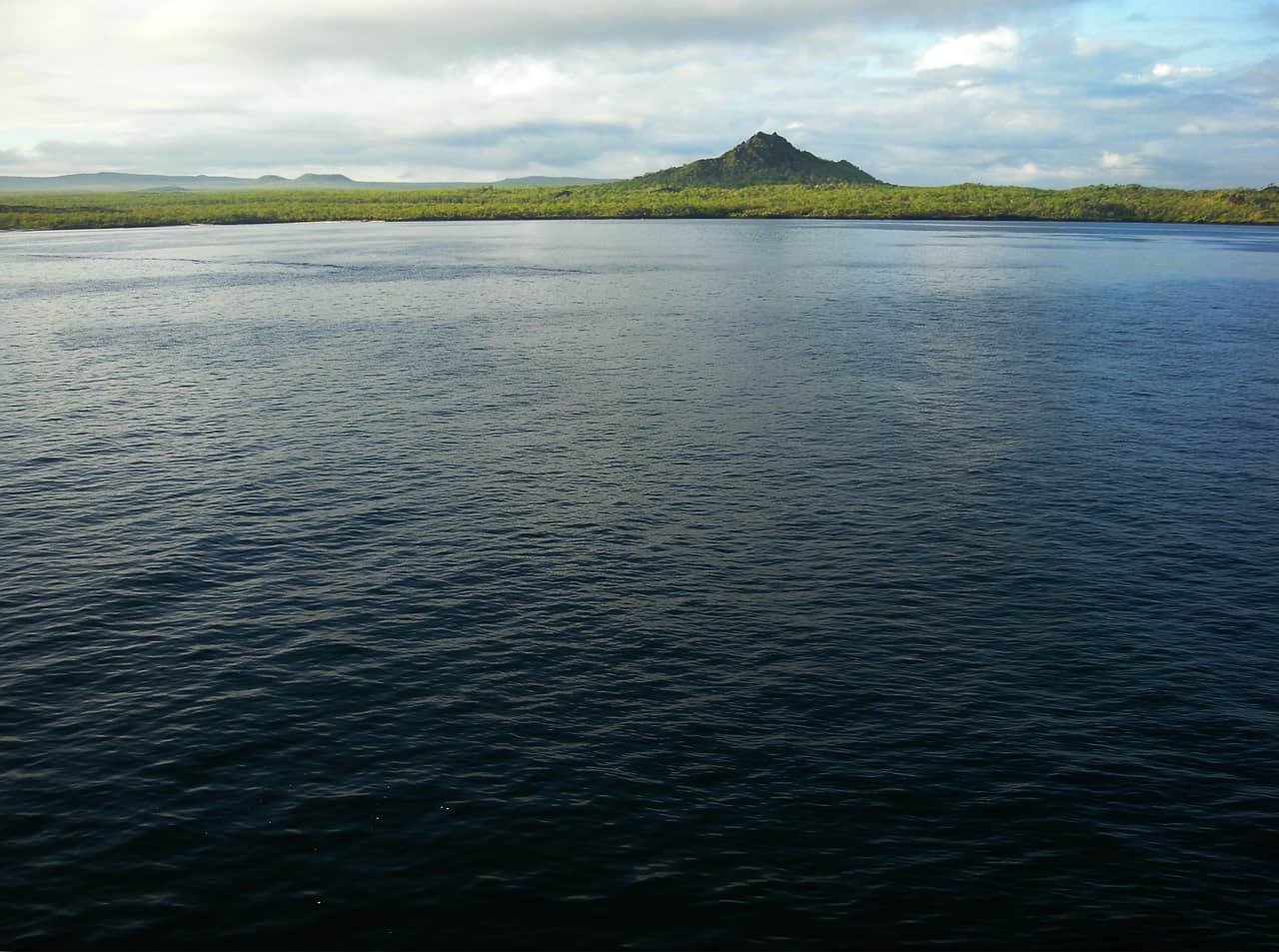
Other than that, it also has 107 rock formations and islets, and 6 smaller islands.
The oldest island in the Galapagos Islands formed 5-10 million years ago.
According to studies, the first island in the Galapagos formed due to tectonic activity millions of years ago. To this day, new islands are still being formed tin the Galapagos through volcanic eruptions.
Galapagos Islands did not appear on any maps until around 1570.
If you lived before the late 1500s, you probably wouldn’t see the Galapagos Islands on your geography textbooks. Abraham Ortelius and Mercator first drew the islands in 1570, naming it Insulae de Los Galopegos which translates to ‘Islands of the Tortoises.’
Volcanic eruptions formed the Galapagos Islands.
The archipelago of the Galapagos was the product of over 1,000 years of volcanic activity. Continuous volcanic eruptions caused the buildup of igneous rock layers on the ocean floor, which eventually formed the islands.
Tomás de Berlanga made the first recorded visit to the Galapagos Islands.
Tomás de Berlanga was a Spanish nobleman and a bishop from Panama. While sailing from Panama to Peru in 1535, his ship veered off course – which accidentally led him to the Galapagos Islands.
Galapagos Islands is home to the only penguin species found in the northern hemisphere.
The Galapagos penguins are the only ones separated from their siblings in the Arctic. The Galapagos penguins reside mainly on Isla Fernandina and Isla Isabela. The penguins survived a tropical Ecuadorian habitat due to the nutrient-rich water of the Humboldt Current.
The Galapagos Islands' Isla Baltra served as a US Air Force base in WWII.
Aside from protecting the Panama Canal, crews were stationed at the Isla Baltra or ‘South Seymour’ to monitor the Pacific for enemy submarines.
Today, Isla Baltra continues to serve as an official military base for Ecuador.
Long after WWII, the Ecuadorian government now makes use of the war facilities in Isla Beltra.
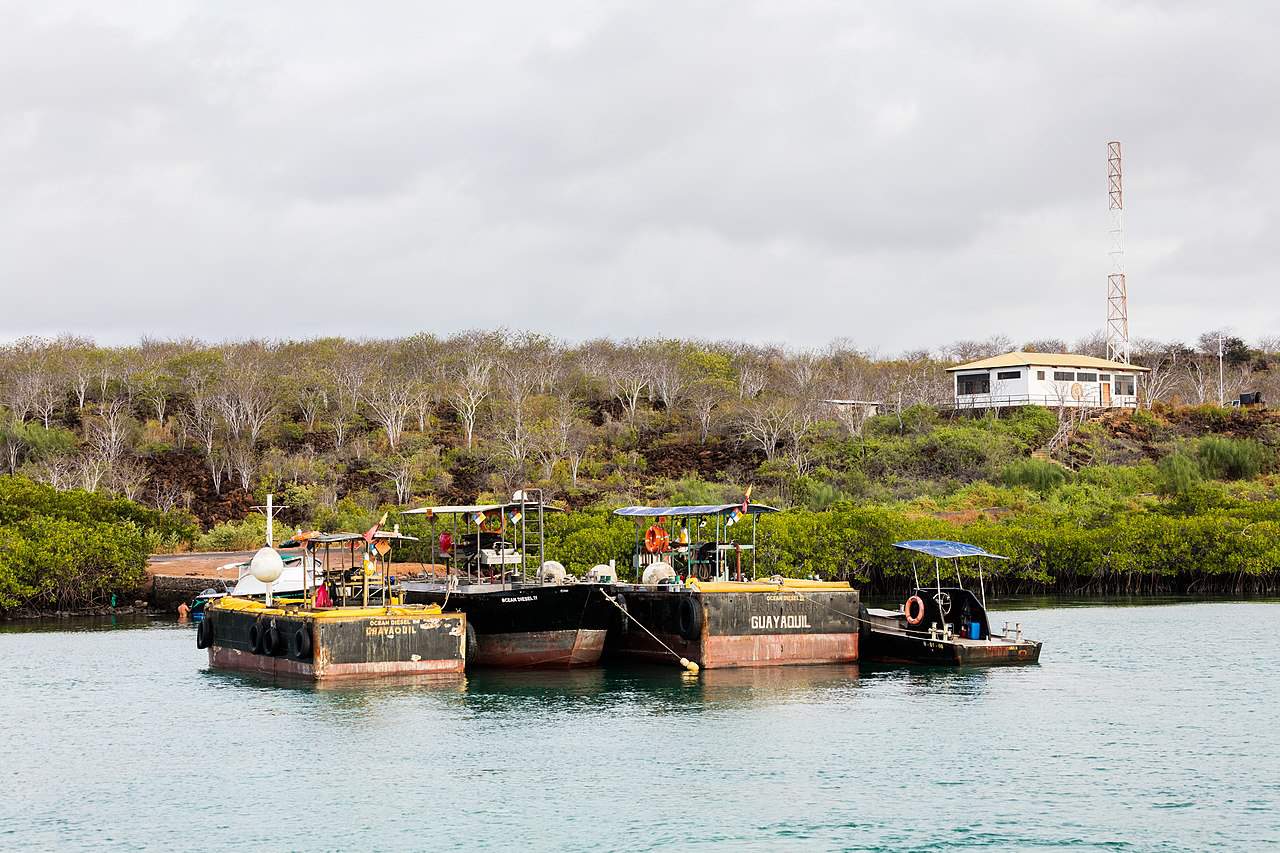
Isla Bartolomé got its name from British Navy’s Lt. David Bartholomew.
Isla Bartolomé is a small island east of Isla Santiago. Although desolate, Isla Bartolomé is among the most photographed and most visited islands in the archipelago. Bartholomew Island takes after the name of a lieutenant aboard the HMS Beagle, Lt. David Bartholomew.
The Isla Bartolomé is an extinct volcano.
Various colored volcanic formations and a tuff cone called Pinnacle Rock are among the distinct features of the island. When lava touched the sea, the result was the large, black, and partially eroded cone that is the Pinnacle Rock.
A wide variety of birds take shelter in Isla Bartolomé.
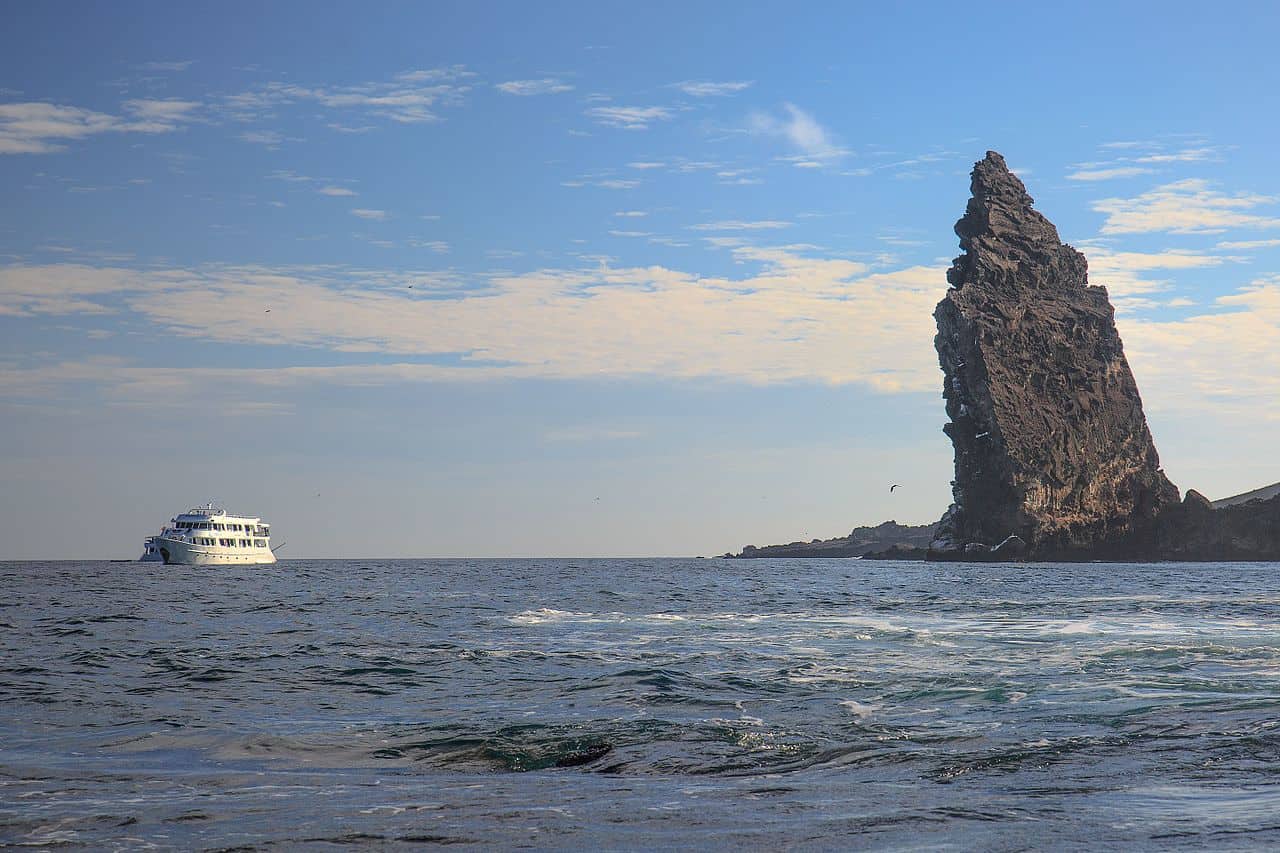
Other animals here are the sea lions, Galapagos penguins, nesting marine turtles, and white-tipped reef sharks.
Isla Darwin is the one named after Charles Darwin.
Also known as ‘Culpepper,’ Isla Darwin has a total land area of 1.1 sq km or 0.4 sq mi. and the highest point of 168 m or 551 ft. Some of the animals found in Isla Darwin are the red-footed and Nazca boobies, dolphins, frigates, fur seals, marine iguanas, marine turtles, sea lions, swallow-tailed gulls, and whales.
Isla Española honors Spain through its name.
This island is also referred to as ‘Hood’ is a name after an English nobleman. Isla Española has a total land area of 60 sq km or 23 sq mi. and the highest point of 206 m or 676 ft.
Isla Española is the oldest island among the Galapagos Islands.
Isla Española has been around for at least 3.5 million years. Moreover, it is the southernmost island whose location yields a large and wide number of endemic fauna. Española’s marine iguanas are unique for their ability to change color during the breeding season.
There are two visitor sites on Isla Española.
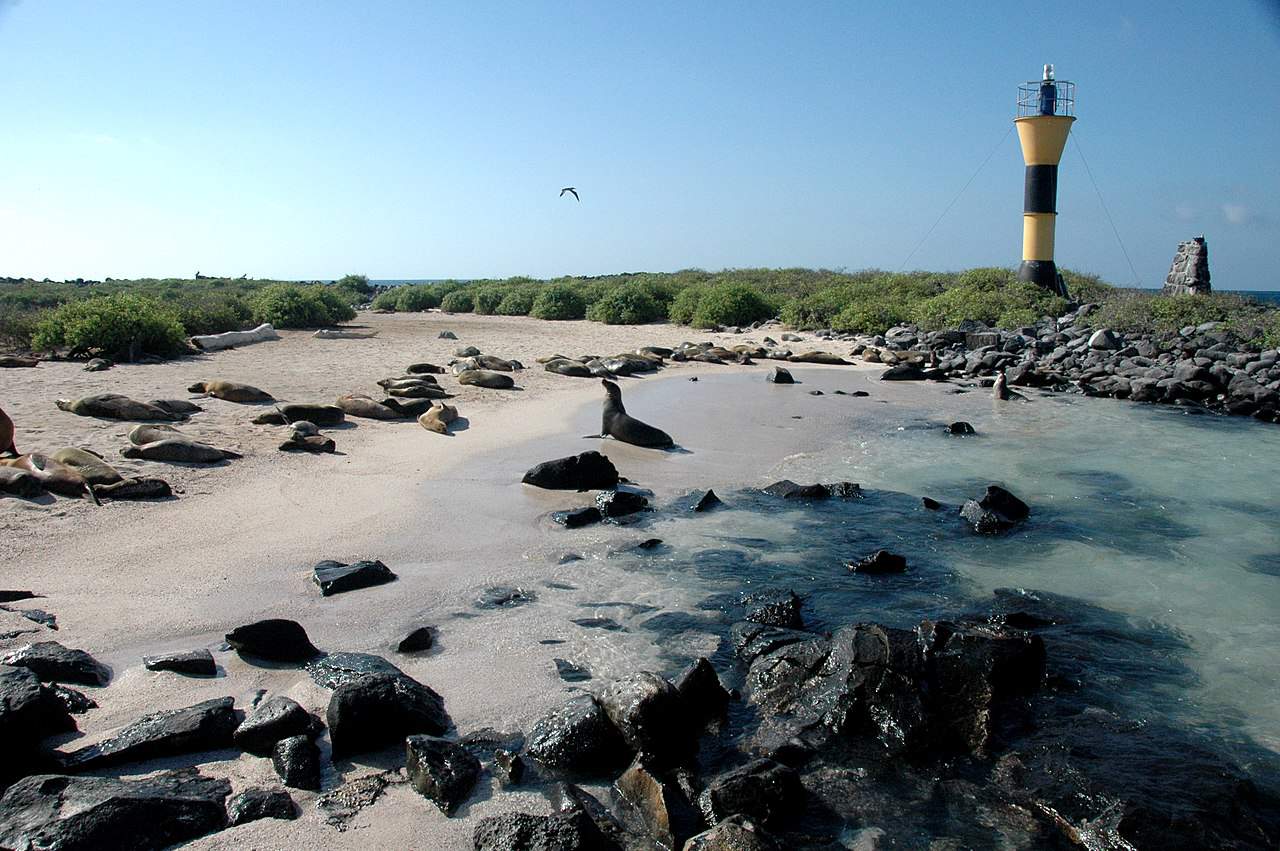
Gardner Bay is a beach, snorkeling, and swimming site all in one. On the other hand, Punta Suarez is home to endemic, migrant, and resident wildlife including Española lava lizards, Hood mockingbirds, Galapagos Hawks, waved albatross, and a few finch selections.
Isla Fernandina is the youngest and westernmost island in the Galapagos.
Isla Fernandina honors King Ferdinand of Spain, the sponsor of Columbus’ voyage. Also known as Narborough, the island has a total land area of 642 sq km or 248 sq mi. Its highest point is 1,494 m or 4,902 ft.
Punta Espinosa is home to a wide variety of lava flows and mangrove forests.

Punta Espinosa shelters the famous flightless cormorant, Galapagos penguins, marine iguanas, pelicans, and sea lions.
The original name of Isla Floreana was Charles Island.
One of the unexpected Galapagos Island facts: Charles Island supposedly honored the British King Charles II. However, it was changed to Floreana in honor of Juan José Flores. He was the first president of Ecuador and it was under his administration when the Ecuadorian government took authority over the Galapagos Islands.
Another name for Isla Floreana is Santa Maria from one of Columbus’ caravels.
Isla Floreana has a total land area of 173 sq km or 66.8 sq mi. and the highest point of 640 m or 2,100 ft.
Isla Floreana is one of the earliest islands in the Galapagos to be inhabited, giving it an interesting human history.
In 1832, General José Villamil built a colony meant for political prisoners on this island. The island had the Post Office Bay since the 18th century where a wooden barrel served as a post office.
The Devil’s Crown in Isla Floreana is an underwater volcanic cone.

The name Devil’s Crown might suggest otherwise, but this part of Isla Floreana is nowhere near hellish. Instead, many coral formations are found here. From December to May, green sea turtles and pink flamingos nest on the island. Another endemic animal here is the sea bird Patapegada or Galapagos petrel which spends most of its time away from land.
Isla Genovesa is named after Genoa, Italy.
Although unconfirmed, one accepted theory of the island’s etymology is because Christopher Columbus was born in Genoa, Italy. A majority of the island was from the edge of a large, submerged crater. Isla Genovesa has a total land area of 14 sq km or 5.4 sq mi.
Isla Genovesa is known as the bird island.
Darwin Bay in Isla Genovesa holds a large number of bird species, including: Darwin finches, frigatebirds, doves, lava gulls, lava terns, noddy terns, red-footed boobies, storm petrels, and tropical birds. out of all these birds, swallow-tailed gulls are the world’s only nocturnal gulls.
Isla Genovesa is home to Prince Phillip’s Steps.
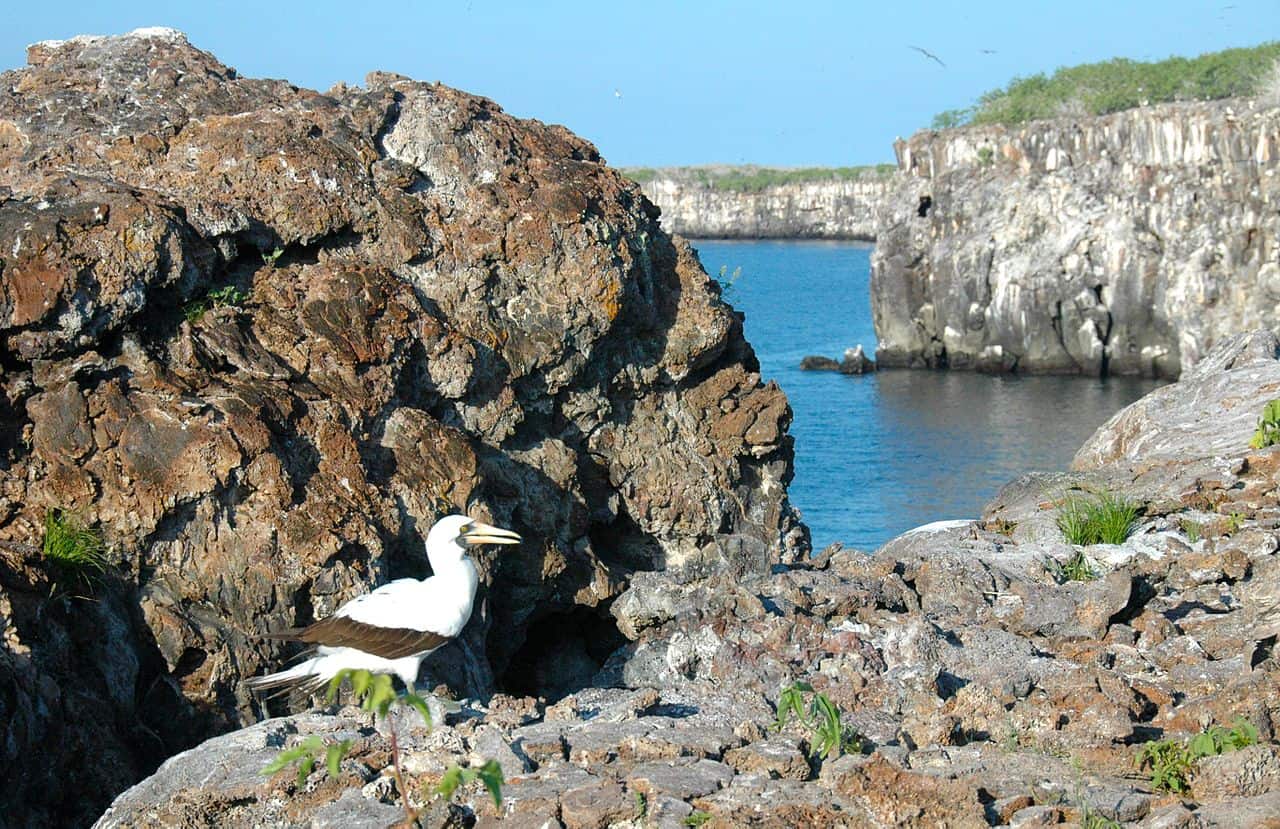
Prince Phillip’s Steps is a bird-watching plateau where Nazca and red-footed boobies could be seen. A thin palo santo forest also spans the island.
Isla Isabela is the largest island in the Galapagos.
Isla Isabela hails its name from Queen Isabela but is also known as Albemarle. Moreover, it has a total land area of 4,640 sq km or 1,972 sq mi.
Wolf Volcano is the highest point of Isla Isabela.
At its altitude is at 1,707 m or 5,600 ft, Wolf Volcano is the highest peak in Isla Isabela. Meanwhile, Puerto Villamil in southeastern Isla Isabela is the third largest human settlement in the Galapagos Islands.
6 large volcanoes merged to form Isla Isabela.
Isla Isabela is known for its distinct shape of a seahorse. Animals on the island include boobies, flightless cormorants, Galapagos penguins, marine iguanas, pelicans, and Sally Lightfoot crabs.
Isla Marchena derived its name from Fray Antonio Marchena.
Also known as Bindloe, Isla Marchena has a total land area of 130 sq km or 50 sq mi., with its highest point at 343 m or 1,125 ft.
The Marchena lava lizard is an endemic species in Isla Marchena.
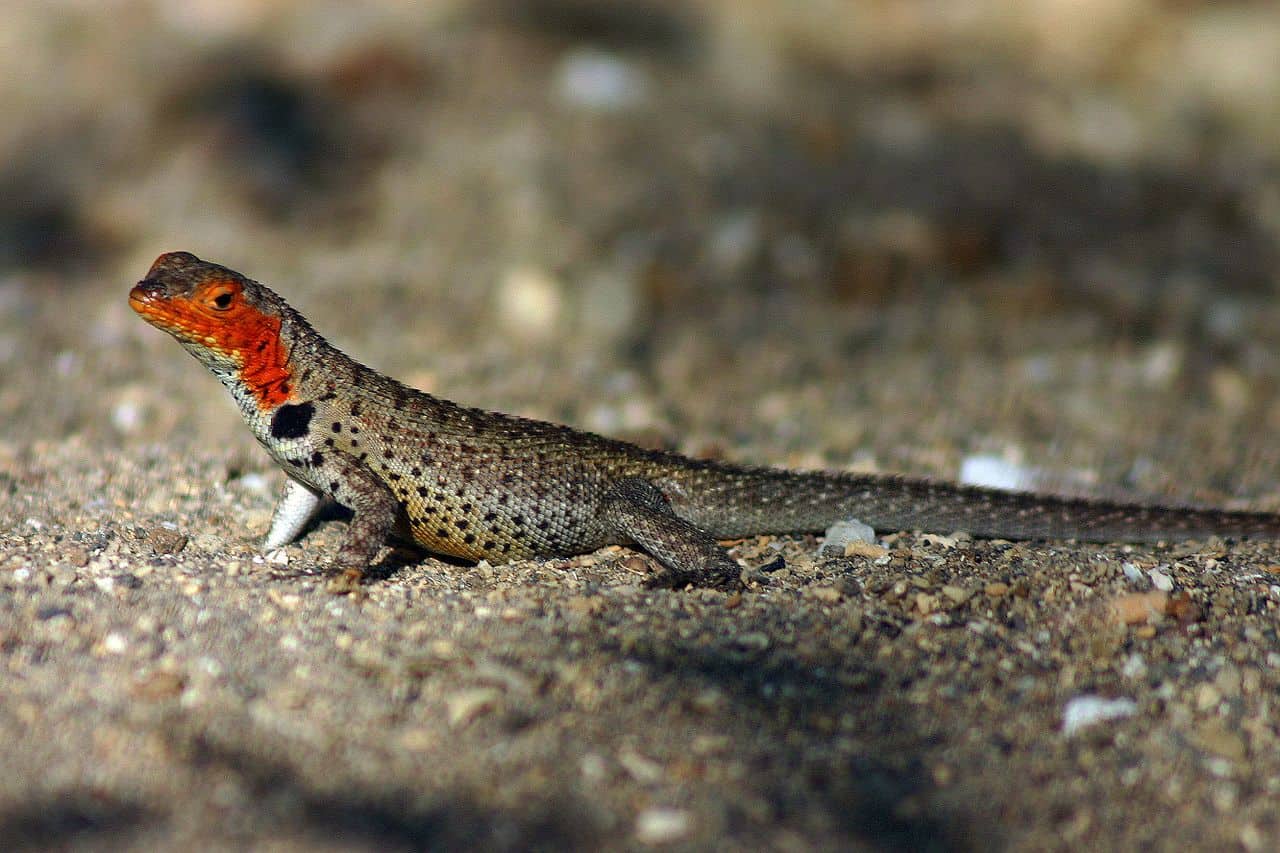
Other animals that inhabit the island include the Galapagos hawks and sea lions. Definitely one of the Galapagos Islands facts that show the diversity of life there.
Isla North Seymour got its name from Lord Hugh Seymour, an English nobleman.
Isla North Seymour has a total land area of 1.9 sq km and 0.7 sq mi., with an altitude at 28 m or 92 ft.
The formation of Isla North Seymour is the product of geological uplift.
Aside from hosting one of the largest frigate bird populations, Isla North Seymour is also home to numerous blue-footed boobies and swallow-tailed gulls.
Isla Pinta is another island whose name is from a Columbus caravel.
Also known as Abingdon, Isla Pinta has a total land area of 60 sq km or 23 sq mi., with its highest altitude at 777 m or 2,549 ft. Fur seals, marine iguanas, sparrow hawks, and swallow-tailed gulls are a few distinct species that habitate the island.
Isla Pinta also hails its name from the Pinta giant tortoise, the rarest living creature in the world.

Unfortunately, this species is now extinct following the death of Lonesome George, the last surviving Pinta giant tortoise in 2012.
Isla Pinzón got its name from the captains of the Pinta and Niña ships.
Isla Pinzón was named after the brothers. Also known as Duncan, the island has a total land area of 18 sq km or 7 sq mi. with the highest altitude of 458 m or 1,503 ft. Animals in Isla Pinzón are dolphins, Galapagos hawks, giant tortoises, marine iguanas, and sea lions.
Isla Rábida is named after the convent of Rábida.
Columbus left his son in Isla Rábida during his American voyage. Also known as Jervis Island, its nickname hails from admiral John Jervis, the 18th-century British admiral.
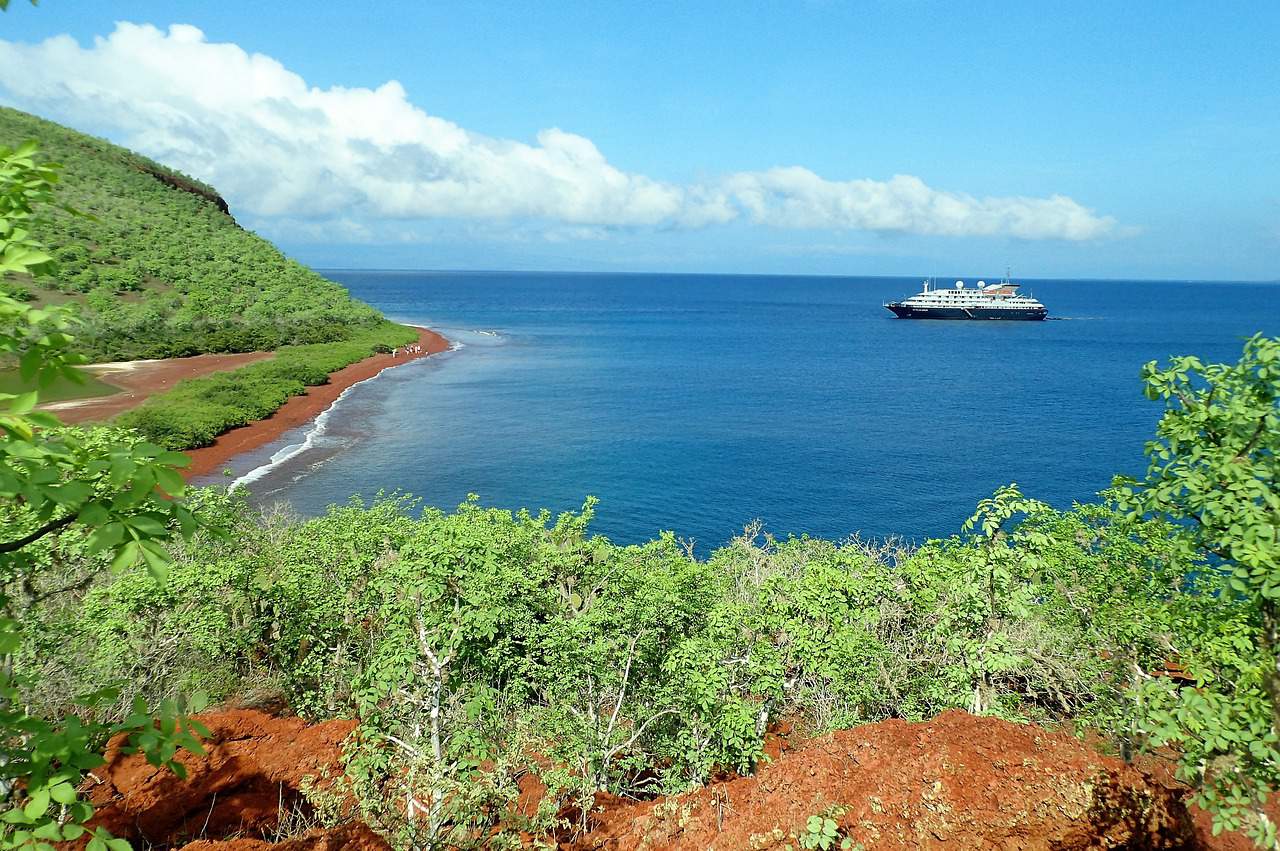
Isla Rábida has a distinctive red color due to the high iron content of lava.
Isla Rábida’s land area totals at 4.9 sq km or 1.9 sq mi. while its highest altitude tops at 367 m or 1,204 ft.
Isla Rábida is home to at least 9 species of finches.
Other birds found on the island are the white-cheeked pintail ducks, brown pelicans, and boobies. While the former live in a salt-water lagoon by the beach, the 2 former build their nests there. Lack of food in the island compelled flamingos to flee to other islands.
Isla San Cristóbal derived its name from St. Christopher, the patron saint of seafarers.
Its English name is Chatham, which hails from the first Earl of Chatham, William Pitt. Moreover, its total land area is at 558 sq km or 215 sq mi., and its highest point is at 730 m or 2,395 ft.
Isla San Cristóbal vegetation includes the Lignum vitae, Calandrinia Galapagos, and Lecocarpus darwinii.
Meanwhile, animal inhibitors of the island include the blue and red-footed boobies, dolphins, giant tortoises, frigate birds, marine iguanas, sea lions, tropical birds, and swallow-tailed gulls.
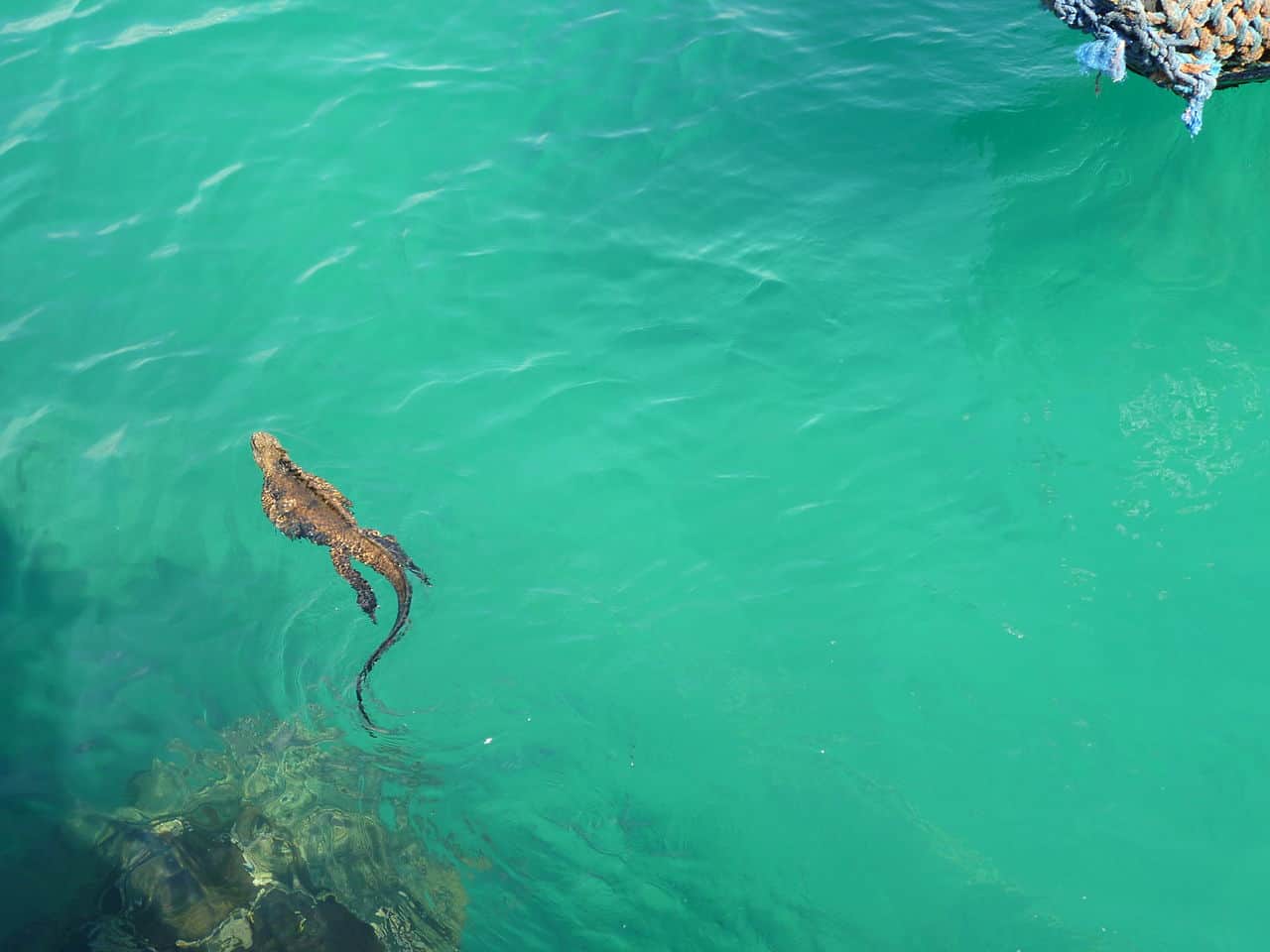
Isla San Cristóbal has the Galapagos Islands' largest freshwater lake.
Laguna El Junco lies in the San Cristóbal highlands. It lies opposite the Puerto Baquerizo Moreno, the capital province of the Galapagos Islands.
Isla Santa Cruz carries the name Spanish name of the Holy Cross.
In English, it goes by Indefatigable which came from the name of the British vessel HMS Indefatigable. It covers a total land area of 986 sq km or 381 sq mi., and reaches the highest altitude of 864 m or 2,834 ft.
The CDRS and GNPS are operating a tortoise breeding center in Isla Santa Cruz.
The Charles Darwin Research Station and the Galapagos National Park Service protect and conserve the large population of tortoises in Isla Santa Cruz. Moreover, the place serves as hatching, rearing, and preparing pace for young tortoises before they get reintroduced to their natural habitat.
Isla Santa Cruz has a rep for its famous lava tunnels and abundant vegetation.
The Black Turtle Cove in Isla Santa Cruz sits in a mangrove where rays, sea turtles, and small sharks mate. Meanwhile, the Cerro Dragón has a flamingo lagoon where land iguanas forage along the trails.
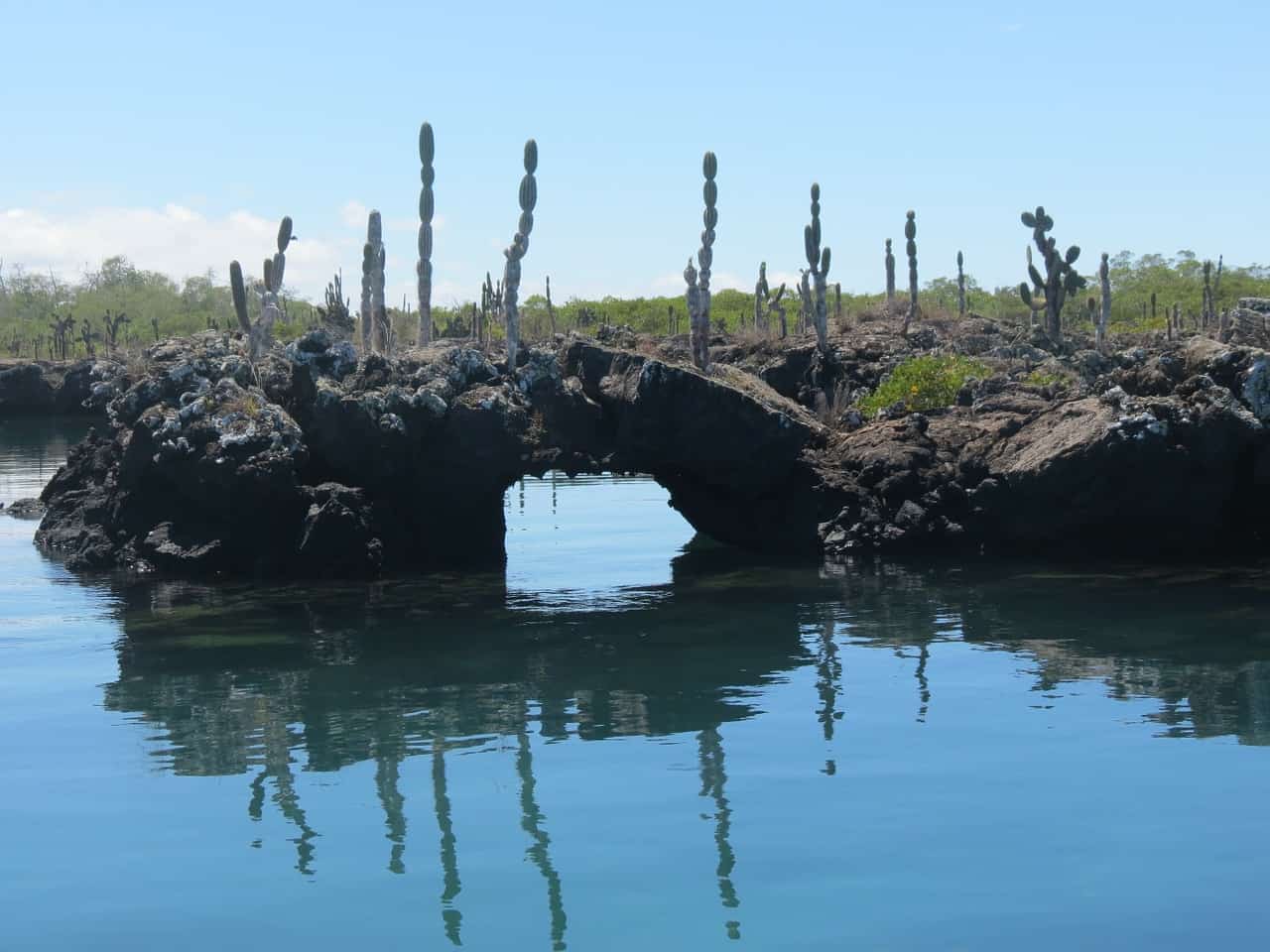
Isla Santa Fe goes by a similar name as a Spanish city.
Going by Barrington in English, the island covers a total land area of 24 sq km or 9 sq mi. and the highest altitude of 259 m or 850 ft. Moreover, Isla Santa Fe is home to a forest of Palo Santo and Opuntia cactus, the largest in the Galapagos.
Isla Santa Fe’s weathered cliffs are home to various bird species.
Endemic species in Isla Santa Fe include the red-billed tropical birds, shear-waters petrels, and swallow-tailed gulls. Other animals found on the island are land iguanas and lava lizards.

Isla Santiago was the first island in the Caribbean Sea that Christopher Columbus discovered.
Known in English as the Saint James island, but it is also known as San Salvador. Further, it covers a total land area of 585 sq km or 226 sq mi., and reaches a maximum height of 907 m or 2,976 ft.
The human introduction of pigs and goats to the Galapagos Islands harmed the endemic species.
Among the animals native to the Galapagos are the dolphins, flamingos, fur seals, land and sea turtles, marine iguanas, sea lions, and sharks. Eventually, people ended up eradicating the pigs and goats from the archipelago.
The pahoehoe lava flow is a sight to behold at the Sullivan Bay.
People could also witness Darwin finches, Galapagos Hawks, and Fur seals in the area.
Isla South Plaza’s name is in honor of General Leonidas Plaza, a former Ecuador president.
Isla South Plaza has total land area of 0.13 sq km or 0.05 sq mi., while its highest altitude is at 23 m or 75 ft.
Sesuvium plants form a red carpet on the lava formations of the South Plaza.
The Opuntia cactus is also part of its flora. On the other hand, its fauna consists of land and marine iguanas, tropical birds, and swallow-tailed gulls.

Isla Wolf got its name from Theodor Wolf, a German geologist.
It covers a total land area of 1.3 sq km or 0.5 sq mi., and reaches a high of 253 m or 830 f.
Isla Wolf is home to the famous vampire finch who feeds on boobie blood.
Other animals found on the island are masked and red-footed boobies, dolphins, frigates, swallow-tailed gulls, furs seals, sharks, and whales.

97% of the Galapagos Islands are national parks.
Galapagos National Park has been protecting over 3,000 sq mi. of islands and islets. Likewise, the Galapagos Marine Reserve protects the 50,000 sq mi. of ocean surrounding the islands which are also listed as a UNESCO Biosphere Reserve.
The Galapagos Islands experience 2 different seasons.
The hot seasons give warmer and humid weather from December-May. On the other hand, the dry season is slightly cooler and lasts from June-November. These seasons make the island either lush green or slightly barren and arid.
The Galapagos Islands get more rainfall during the hot season.
With an average temperature around 79°F or 26°C, warmer ocean temperatures and calmer seas come alongside it. The dry season over the Galapagos Islands brings a breeze ideal for increased marine activity. How’s that for Galapagos Islands facts?
UNESCO lists the ocean around the Galapagos Islands as a Biosphere Reserve.
The Galapagos Marine Reserve protects the 50,000 sq mi. of ocean surrounding the islands.
Was this page helpful?
Our commitment to delivering trustworthy and engaging content is at the heart of what we do. Each fact on our site is contributed by real users like you, bringing a wealth of diverse insights and information. To ensure the highest standards of accuracy and reliability, our dedicated editors meticulously review each submission. This process guarantees that the facts we share are not only fascinating but also credible. Trust in our commitment to quality and authenticity as you explore and learn with us.
